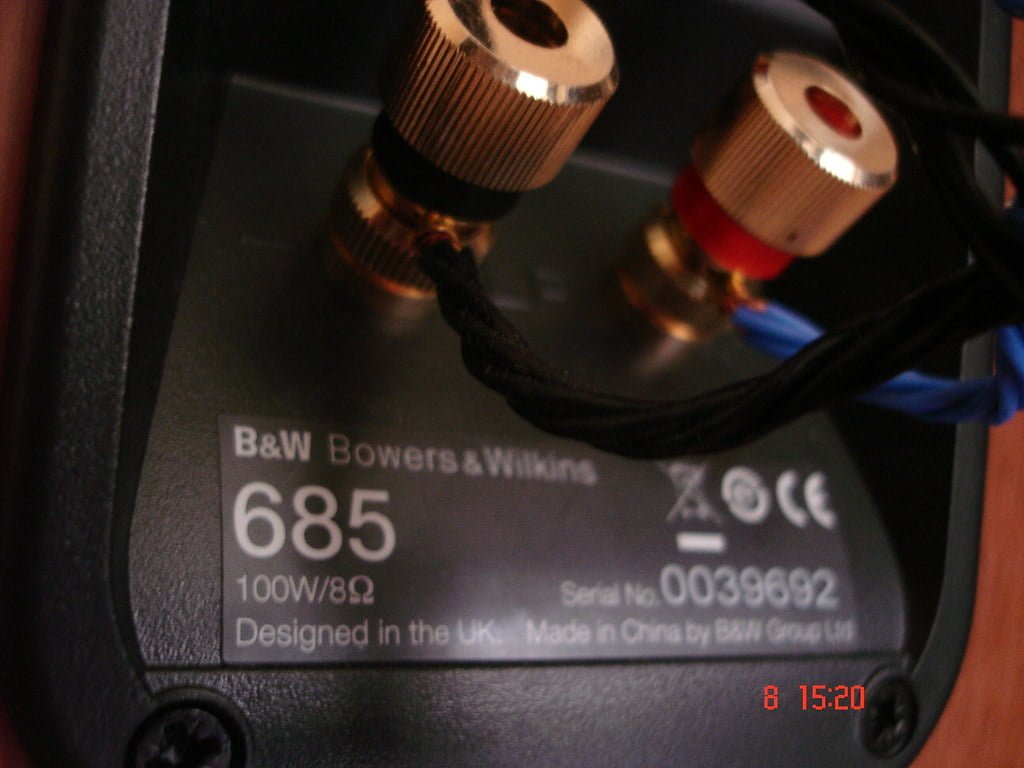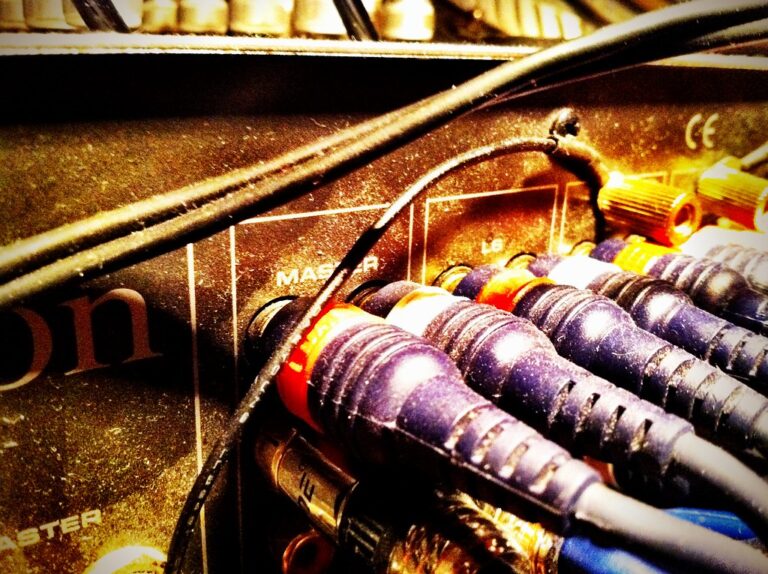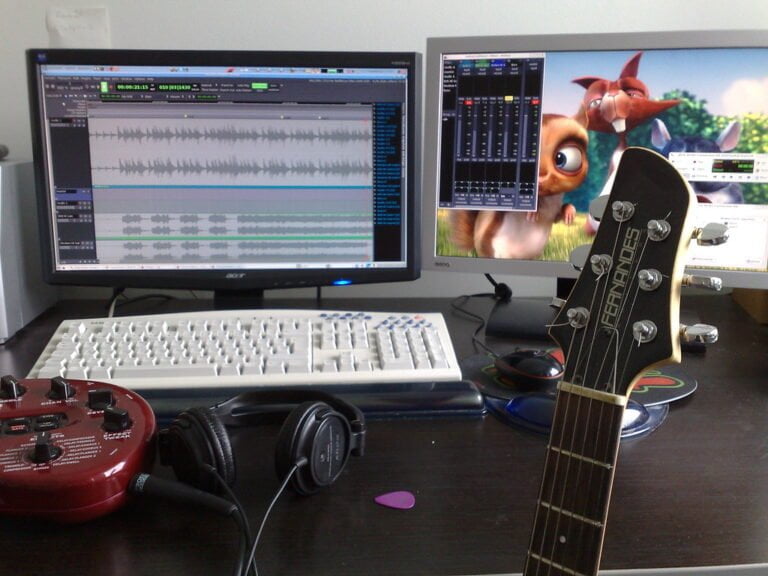Bi-Wiring and Bi-Amping: Maximizing Speaker Performance With Multiple Cables
As the saying goes, ‘Don’t put all your eggs in one basket.’ When it comes to optimizing speaker performance, bi-wiring and bi-amping are methods that can take your audio setup to the next level. By utilizing multiple cables in a strategic manner, these techniques hold the potential to reveal hidden depths in your sound system. But how exactly do they work, and what benefits do they offer? Let’s explore how bi-wiring and bi-amping can reveal hidden potentials in your listening experience and elevate the way you engage with music and audio.
We are supported by our audience. When you purchase through links on our site, we may earn an affiliate commission, at no extra cost for you. Learn more.
Understanding Bi-Wiring and Bi-Amping
Exploring the intricacies of bi-wiring and bi-amping reveals the fundamental principles behind optimizing speaker performance. When we bi-wire a speaker, we use two sets of cables to separately connect the high and low frequency drivers to the amplifier. This separation minimizes interference between high and low frequencies, resulting in improved sound quality. By allowing each driver to receive a dedicated signal path, bi-wiring enhances the overall clarity and detail in sound reproduction. High frequencies benefit from reduced interaction with the power-hungry low frequencies, leading to a cleaner sound output.
In contrast, bi-amping takes this concept further by employing separate amplifiers for the high and low frequencies of each speaker setup. This approach assures that each driver receives ample power tailored to its specific frequency range, optimizing the speaker’s performance. Bi-amping enhances not only sound precision but also dynamic soundstage, providing a more immersive listening experience.
Both bi-wiring and bi-amping offer distinct advantages in managing high and low frequencies efficiently. Upgrading speaker cables plays a significant role in maximizing the benefits of these configurations. By understanding the differences between bi-wiring and bi-amping, we can make informed decisions to enhance our speaker systems and elevate our audio experience to new heights.
Benefits of Utilizing Multiple Cables
Utilizing multiple cables in speaker setups optimizes performance by segregating high and low frequencies for enhanced sound quality and system efficiency. By employing separate sets of speaker cables for high and low frequencies, audio enthusiasts can achieve a more precise distribution of power and audio signals. This segregation minimizes interference between the frequencies, resulting in cleaner sound reproduction. Bi-wiring, a method that involves using two cables to connect a single speaker to a source or amplifier, allows for a dedicated path for each frequency range, reducing signal degradation and improving overall audio clarity.
One of the key advantages of utilizing multiple cables in a bi-wiring configuration is the improved sound isolation it provides. By separating the connections for high and low frequencies, each driver in the speaker receives a cleaner signal tailored to its specific frequency range. This tailored design enhances the performance of individual drivers and crossovers, resulting in a more accurate and detailed sound reproduction.
Moreover, amplifiers can benefit from bi-wiring setups. With separate cables carrying high and low frequencies, amplifiers can more effectively control the power distribution to each driver. This leads to simplified loads on the amplifier and improved control over the audio signals, ultimately resulting in enhanced sound quality and system efficiency.
How to Bi-Wire Your Speakers
To properly bi-wire your speakers, make sure you have two separate speaker cables and speakers with dual binding posts for high and low frequency separation. Bi-wiring involves using one cable for the high frequencies and the other for the low frequencies, allowing for improved sound quality and enhanced clarity. This setup is essential for achieving detailed sound reproduction and reducing interference.
To start the bi-wiring process, confirm your speakers have dual binding posts, which are typically labeled as ‘HF’ (high frequency) and ‘LF’ (low frequency). Remove any jumpers or metal straps connecting the binding posts to separate the high and low frequencies. Connect one speaker cable to the high frequency binding posts on both speakers and the other cable to the low frequency binding posts.
Using two separate cables for bi-wiring not only enhances the overall audio performance but also provides better control over the different frequency ranges. By allowing each driver to receive its dedicated signal path, bi-wiring minimizes interference and crosstalk, resulting in a cleaner sound output. Remember, the key to successful bi-wiring lies in utilizing quality cables and correctly connecting them to the dual binding posts on your speakers.
Bi-Amping Techniques for Enhanced Performance
With bi-amping, speakers can achieve enhanced performance through the utilization of separate amplifiers for high and low frequencies within each speaker. This technique allows for improved clarity, a wider soundstage, and a more defined dynamic range. By connecting two sets of binding posts on the speaker to separate amplifiers using individual cables for high and low frequencies, the following benefits can be observed:
- Enhanced Soundstage: Bi-amping helps in creating a more expansive and precise soundstage, making the listener feel immersed in the music.
- Tighter Bass Control: Separating the amplification of high and low frequencies enables better control over the bass response, resulting in tighter and more accurate bass reproduction.
- Improved Performance: Overall, bi-amping leads to enhanced performance by providing distinct instrument separation, reduced muddiness in complex musical passages, and increased dynamics for a superior listening experience.
Fine-Tuning Your Audio Setup
Fine-tuning an audio setup involves adjusting volume and crossover settings to optimize sound reproduction within a bi-amping configuration. Ensuring speaker compatibility through dual binding posts is critical for achieving best sound reproduction. In a bi-amp setup, separate amplifiers are utilized for high and low frequencies in each speaker, allowing for precise control and improved performance.
Distinguishing between bi-wiring and bi-amping is essential when fine-tuning your audio system. Bi-amping offers advantages such as enhanced sound clarity, improved bass response, and an expanded soundstage. By leveraging these benefits, one can create a more immersive listening experience.
To fine-tune an audio setup effectively, it is important to carefully adjust the volume levels of the high and low-frequency amplifiers to achieve a balanced sound output. Additionally, setting the crossover points correctly ensures that frequencies are distributed appropriately to the respective amplifiers, optimizing the overall sound quality.






